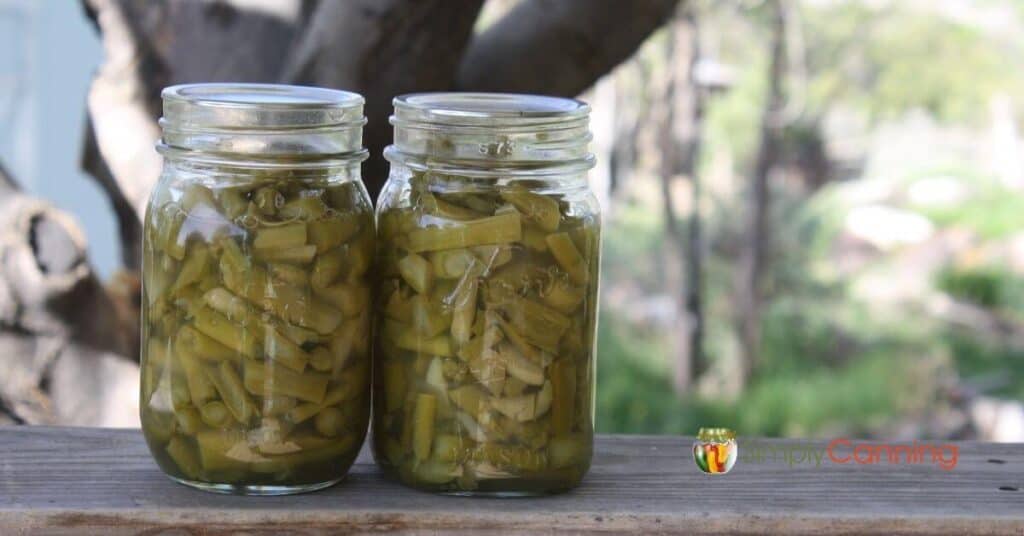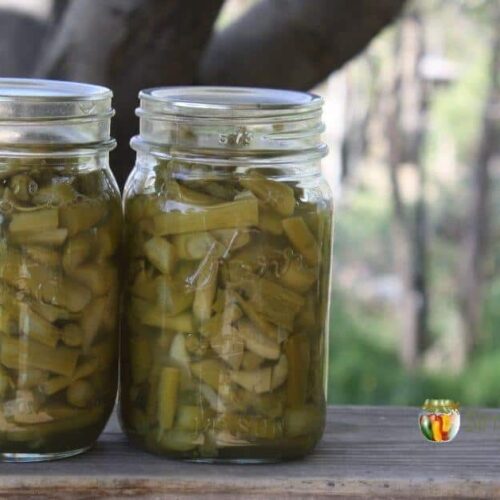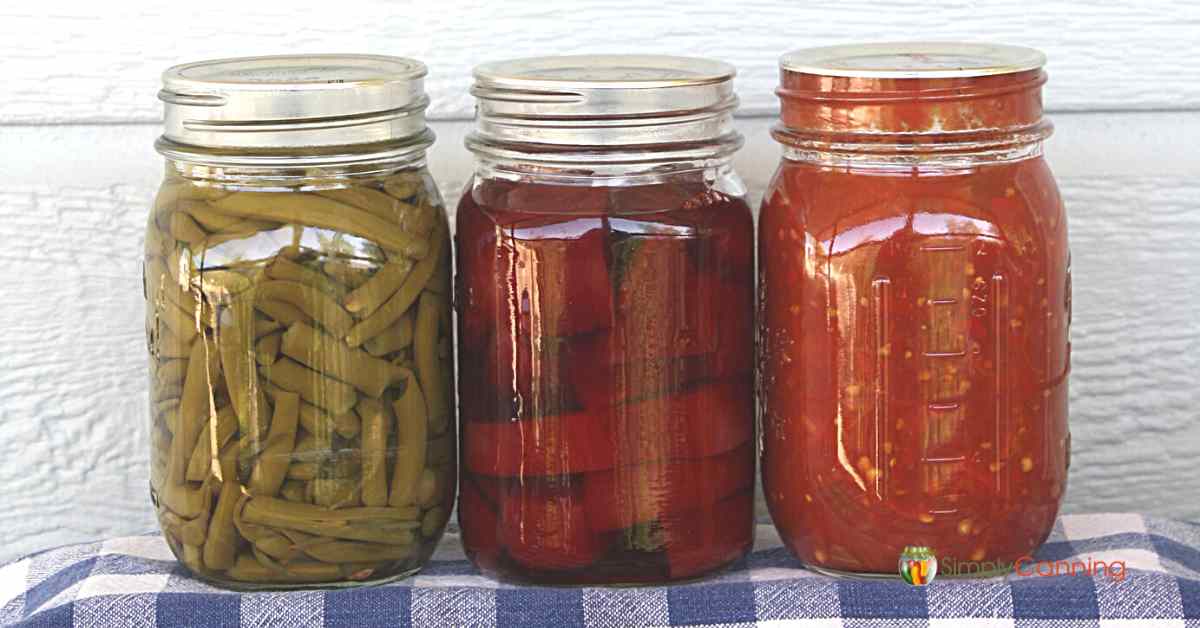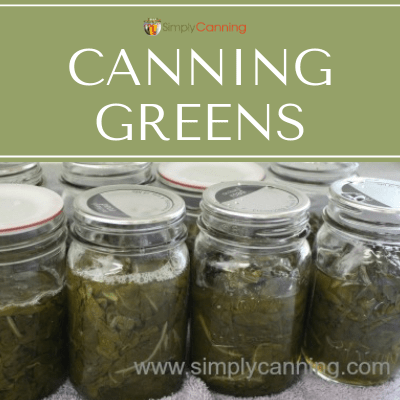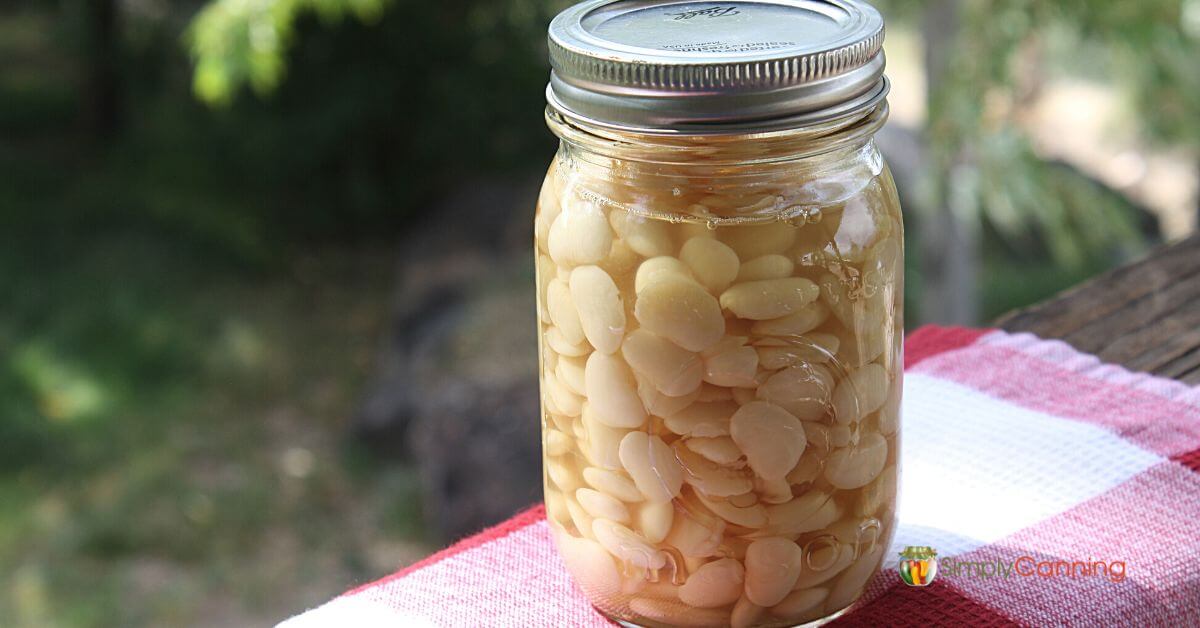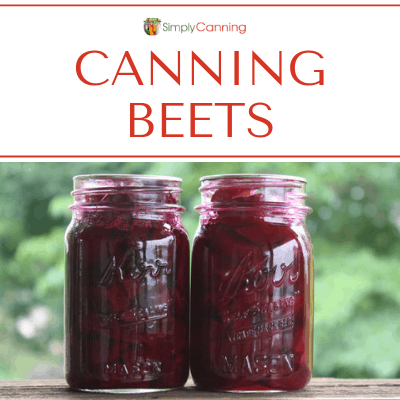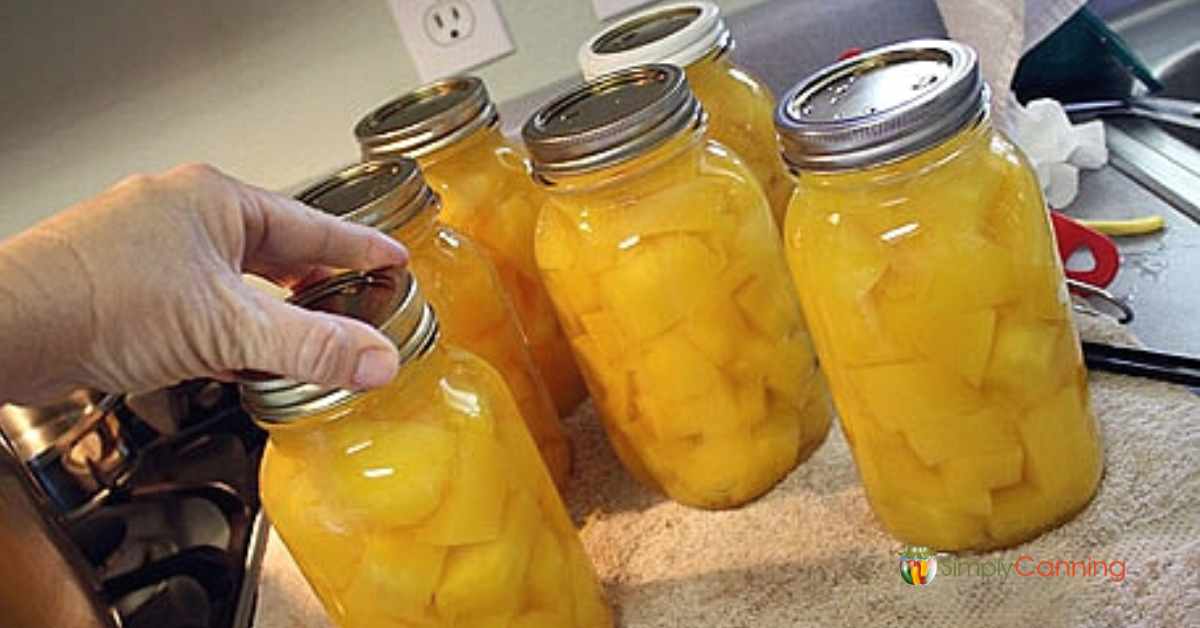How to Can Asparagus
This page may contain affiliate links. More Information.
A good friend brought me bags of fresh picked asparagus spears one year. I had lots to experiment with, so I decided to learn how to can asparagus. Home canned asparagus gets very soft. You may or may not like it. But you can use it for making soup or adding to other meals if you don’t like the texture. Be sure and check the tips section for some ideas. You’ll need 16 pounds for 9 pints or 24–25 pounds for 7 quarts.
Supplies
- pressure canner
- canning jars
- canning seals and rings
- jar lifter and canning funnel
- large pot or blancher
Ingredients
- Asparagus
- Canning salt (optional)
- Water
Raw or Hot Pack
Asparagus can be packed either hot or raw pack. It is your choice. Remember this is just how you pack the jars. Either packing method will be processed in a pressure canner.
Raw Pack
Wash fresh asparagus and cut into the desired lengths. Pack asparagus pieces tightly into jars.
Add salt (1/2 teaspoon per pint or 1 teaspoon per quart) if desired. Add boiling water to jar, leaving 1″ headspace. Remove air bubbles with a bubble tool. Then process according to chart below.
Remember raw pack method asparagus does not mean no pressure canning. You DO need to process this. Raw pack simply means packing it into the jars raw and uncooked.
Hot Pack
Wash asparagus and cut into the desired lengths. Place it in a pot with water to cover. Boil for 2-3 minutes, then add hot asparagus loosely into hot jars (without squishing). Since it is heated it will be soft. Be careful not to smush your asparagus. Remove air bubbles with a bubble tool.
Add salt (1/2 tsp. per pint jars or 1 tsp. per quart) if desired. Add boiling water to jar, leaving 1 inch headspace. Process according to chart below.
If you are not familiar with using your pressure canner Check this article for step by step tutorial.
Don’t forget to adjust for altitude!
Tips & FAQs
How Do You Use Canned Asparagus? Does It Get Mushy?
Since I was not sure I’d like soft, canned asparagus, I was doing some research first. I saw comments from a couple of people: Try canning asparagus and use it to make asparagus soup! Brilliant!
What I’ll do is freeze the tips and choice parts of the asparagus to eat as a side veggie with dinner. Then I’ll can just the stem. I think it’ll work great. If the asparagus is too soft for my liking, I’ll make soup. No wasted food! If you want to can the entire spear, just use the same process as above.
What Asparagus Should You Use for Canning?
The recipe source says you should use tender, tight-tipped spears, ideally 4–6” long. But your asparagus may be much longer.
What I did is cut off the tips and a portion of the stem for fresh eating and freezing, and then I cut the rest into 1–2” pieces for canning. Tender is the key here! You can use the stems for canning, but don’t waste your time on tough, woody stems. They do still need to be the edible portion of the spear.
How to Freeze Asparagus .
Since I know someone will wonder, here is how to freeze the tips if you decide not to can them: I simply cut the tips and some of the stem, blanched lightly, and placed in freezer bags.
Can You Can Asparagus Without a Pressure Canner?
No, unfortunately you must use a pressure canner to make it shelf stable. The main complaint people have is the texture does soften up. But the flavor remains. I didn’t care for it just out of the jar. But I could see making soup or adding it to other recipes.
You can however pickle your asparagus! Pickling it in a white vinegar brine makes it a candidate for the waterbath canner.
There are other options for preserving it and using it. Check this page Ways to Keep Asparagus
Related Pages
Canning Vegetables is perfect for the beginner. Fresh veggies from your garden (or farmer’s market) retain higher nutrition, and canning is a great way to preserve your hard work. Learn at SimplyCanning.com.
Asparagus is one of those vegetables that can be tricky to know what to do with. Learn ways to preserve it by canning, freezing, drying, and pickling! Recipes are included at SimplyCanning.com.
Canned Beets – The process is fairly simple, but may take a little longer than other vegetables you’re used to canning. Step-by-step guide with tips and tricks included at SimplyCanning.com!
Pin This to Find Later!
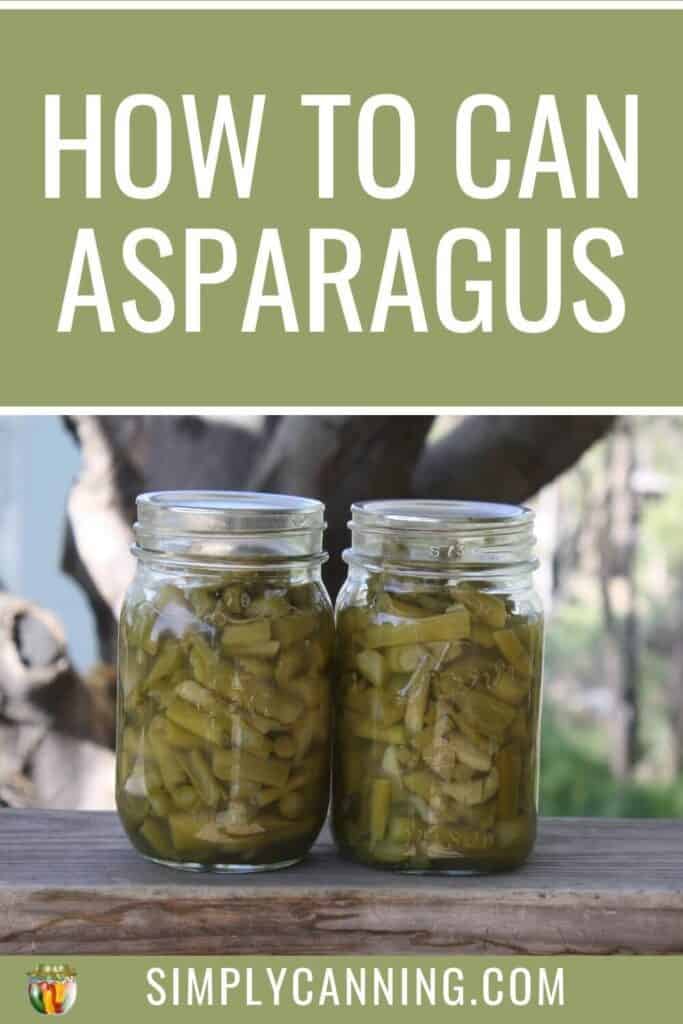
Source: The National Center for Home Food Preservation, Colorado State Extension

